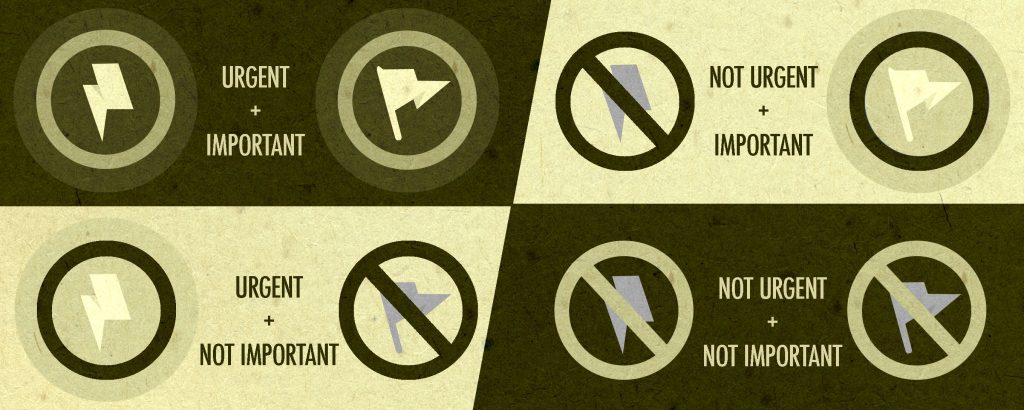I wrote this article when I realized how much work it takes to be mediocre, and how little you need to add to create something extraordinary. Often all it takes is a change of perspective and a conceptual arrangement of the energy invested.
This is also true in marketing. Marketing works. Effort and investment in marketing can turn a stagnant or declining company into a successful one. Marketing is the basis of the extreme growth of startups(uber, scoro, pearl, Demandware). Of course, it is not the only factor. Marketing, however, is one of those that contributes significantly to success. But we must understand and use it in its full breadth.
Let’s look at attitudes to marketing through the ‘four quadrant’ model of priorities. The creation of this model was inspired by the American general and president Eisenhower, who used this logic to sort out his tasks in the most challenging stages of the Second World War. World War. Later this method was popularized by Stephen Covey, author of the book “The Seven Habits of Highly Effective People”.

What does marketing through the “four quadrant” priority model look like?
Despite all that we see and know, few companies are able to commit to and use marketing in a truly purposeful way. In times of abundance and relative stability, marketing most often falls into quadrant 4. According to the scheme of importance and urgency is “Not Important & Not Urgent”. There it waits unnoticed with no goals and no results, seen in passive mode as a cost item whose role is to appease the gods of eternal success in times of need. Sooner or later, however, there comes a time when the whole company remembers marketing. Most often, this is the moment when sales problems occur. Unused time cannot be put off – it can only be wasted. In a panic, the list of priorities is turned over and marketing becomes the topic of every meeting and moves to a different, similarly unsuitable quadrant 1 for marketing. – “Important & Urgent”.
In this quadrant, however, marketing is ineffective. Anything you can adjust in a short time can be immediately repeated by a competitor (for example, a price action). Communication is expensive, strategy is short-sighted, results are low and not long lasting.
“What is important is seldom urgent, and what is urgent is seldom important.”
Dwight D. Eisenhower
Move your marketing into Quadrant 2 “Important & Not Urgent”. Your marketing will become important and gain regularity and project leadership. Its goals will be long term. That’s when they can be really big, significant and stable. Is it worth focusing on this goal? I know it is. If you are interested in the topic, feel free to download the free artwork on the 4 quadrant issue. It has been created for you by our court illustrator Mr. Marsel Onisko.(Download HERE)


